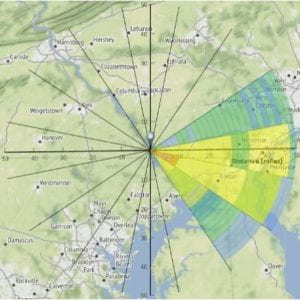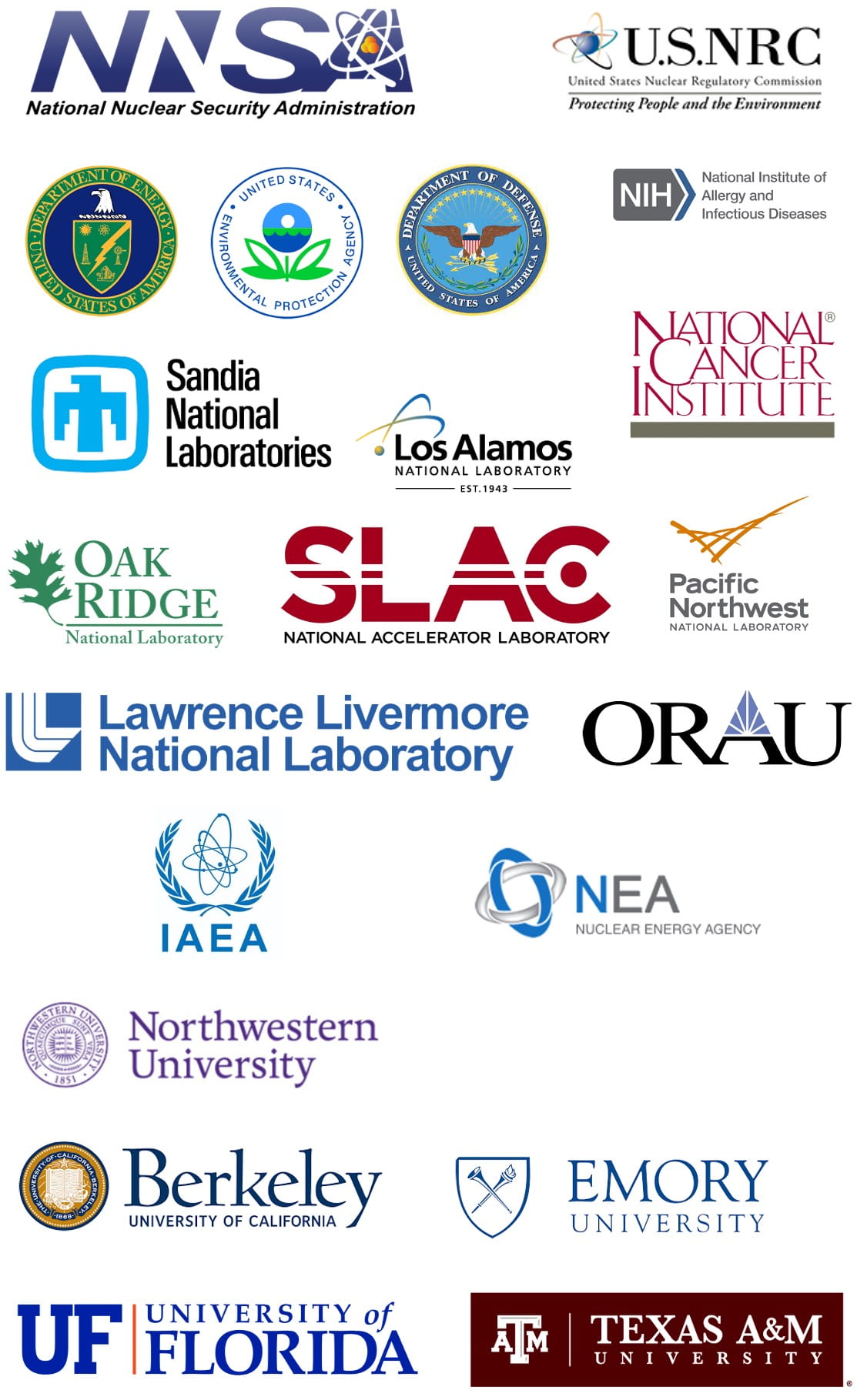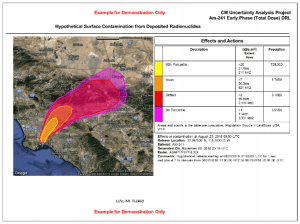“Scientists investigate that which already is. Engineers create that which has never been.”
– Albert Einstein
Mission
The Radiological Engineering, Detection, and Dosimetry (RED²) Laboratory at Georgia Tech is led by Dr. Shaheen Dewji. The RED² Laboratory’s research focuses on harnessing both computational capabilities in Monte Carlo radiation transport modeling and experimental measurements using radiation detection for applications in radiation protection, dosimetry, health physics, and nuclear materials accounting.
Funding Agencies and Collaborators
Research Thrust Areas
Thrust Area 1 – Computational Dosimetry
Research activities include the development of dose coefficients dosimetric and biokinetic models for occupational nuclear workers, members of the public, nuclear medicine, space, defense, and emergency response. Sub-areas include:
-
-
- Age/sex-specific anthropomorphic phantom radiation transport to computer internal and external dose coefficients;
- Biokinetic modeling from internalized (inhalation, ingestion, wounds) radionuclides from nuclear security, reactor, and environmental source terms;
- Multi-scale multi physics computational fluid-particle dynamics (CFPD) modeling of physiologically-based dosimetric models;
- Uncertainty quantification in external and internal dose assessment;
- Machine learning applications in diagnostic imaging, dose reconstruction, and low dose environmental radiation exposures;
- Expanded statistical analysis for consequence management and defense.
-
Projects:
- Evaluation of Exposure Pathway, Internalized Uptakes, and Dosimetry for Military Personnel from Radiological and Toxic Metal Sources
- Uncertainty Analysis of Dose Coefficients for Nuclear Incident Response
- Low Dose Exposure Evaluation on Human Population Health
- Enhancement of Biokinetics using Physiologically-Based Models for Internalized Radionuclides
- Machine Learning in 4DCT Lung Stereotactic Body Radiotherapy (SBRT) Treatment Planning
|
|
|
Thrust Area 2 – Radiation Detection
Research activities include the employment of validation and verification of gamma-ray spectroscopic detector responses. Sub-areas include:
-
- Contaminated environmental media for environmental assessment and decommissioning;
- Field triage assessment of radiation uptake during nuclear, radiological, and fission product release events;
- Nuclear materials control, accounting, and safeguards of special nuclear material.
Projects:
- Evaluation of Exposure Pathway, Internalized Uptakes, and Dosimetry for Military Personnel from Radiological and Toxic Metal Sources
- A Hybrid Radiation Transport Detector Response Function Methodology for Modeling Contaminated Sites
- Neutron dosimetry and Assay with a Portable Neutron Multiplicity Detector

Thrust Area 3 – Radiation Shielding
Research activities include design specification and optimization using radiation transport simulation, metaheuristic algorithmic optimization, and experimental verification of accelerator-driven sources for radiotherapy, with recent focus on FLASH radiotherapy.
Projects:
- Shielding Design And Optimization Of Novel MV Photon Preclinical FLASH Radiotherapy System
- Activation Studies in Petawatt Laser Facilities

Thrust Area 4 – Nuclear Safety, Security & Nonproliferation Policy, and Nuclear Knowledge Management
Research activities include evaluation of nuclear safety, security, and nonproliferation policy, including low dose regulation, nuclear safeguards and nonproliferation, emergency response, nuclear forensics, and nuclear knowledge management. Recent activities have focused on technology agnostic advanced reactor licensing risk-informed safety/security and dose-based siting under 10CFR Part 53 (proposed) and 10CFR Part 73 regulatory language.
Projects:
- Risk-informed Consequence-Driven Physical Protection System Optimization for Microreactor Sites
- Nuclear Material Accountancy During Disposal and Reprocessing of Molten Salt Reactor Fuel Salts
- Risk-Informed Consequence-Driven Hybrid Cyber-Physical Protection System Security Optimization for Advanced Reactor Sites


Research Overview:




